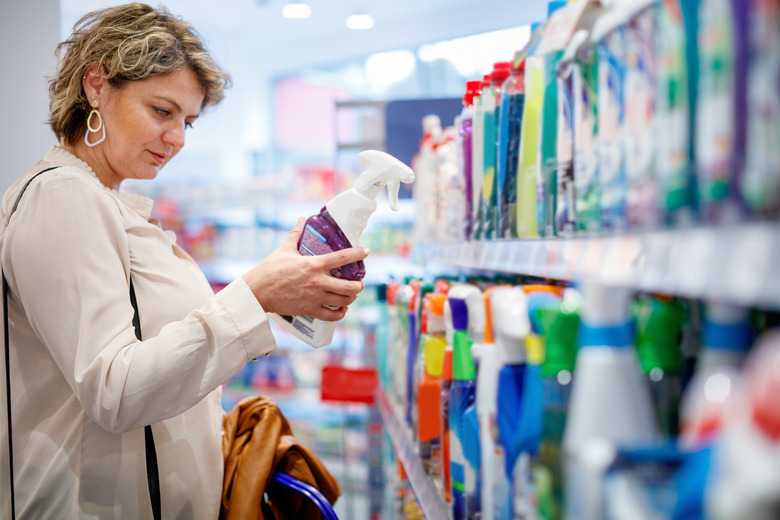What Are High-Alkaline Cleaners?
We may receive a commission on purchases made from links.
A high-alkaline cleaner is one that is highly alkaline in nature as opposed to the opposite end of the scale, which is highly acidic. Alkalinity and acidity are measures of the pH levels of liquids used as cleaning agents, such as bleach, ammonia, or even lemon juice. A high-alkaline cleaner has a high pH level near the top of the pH scale, which is 14. Drain cleaners and oven cleaners both qualify as highly alkaline cleaners.
Understanding the pH Scale
Understanding the pH Scale
The pH scale ranges from 0 to 14, with 7 being completely neutral and neither acidic or alkaline. Dish soap is an example of a neutral cleaner. Numbers below 7 indicate acidic compounds, with 0 being the most acidic. Battery acid is close to 0 on the pH scale, with its own name as a clear giveaway that it's an acidic substance. Lemon juice is one of the most acidic liquids used for cleaning, ranking a 2 on the pH scale.
Anything above 7 on the pH scale is alkaline, or basic, to use a term from high school chemistry classes. Bleach and ammonia average 11 to 13 on the pH scale and could be considered high-alkaline cleaners. Oven cleaner averages 13 on the scale. Drain-clearing products are even more alkaline, averaging 14 on the pH scale.
Alkaline vs. Acidic Cleaners
Alkaline vs. Acidic Cleaners
Alkaline and acidic cleaners have very different properties, which is why they're used for completely different types of cleaning. Alkaline cleaners are effective at cutting through proteins, dirt, greases, oils, and fats, while acids are better at removing mineral buildup and rust. Many household cleaners are alkaline in nature since the average household cleaning projects focus on removing dirty, greasy substances. This includes drain-unclogging products, which are alkaline enough to eat right through the types of grime and protein that lead to clogged pipes. High-alkaline cleaners are the best at removing heavy grease and buildup, so any degreasing products are usually highly alkaline.
Acidic cleaners are good for removing soap scum or limescale and for general window and mirror cleaning. This is why vinegar is often used to remove calcium buildup from showerheads, faucets, and the like; it has a pH of about 2.5, making it fairly acidic in nature. Acidic cleaners are also good at removing beverage-based stains, such as coffee, tea, or cola spilled on a carpet. Any product designed to remove calcium, lime, and rust, such as CLR, is an acidic cleaner.
Cleaners that are fairly neutral are good for light, everyday cleaning. Plain water, which is neutral other than any minerals or chemicals that might be in the water, has enough cleaning power to wipe up some fresh spills or clean up a little dirt. Hand soap and dish soap are also fairly close to neutral in pH, but they're powerful enough for general cleaning tasks.
Dangers on the pH Scale
Dangers on the pH Scale
Both highly acidic and highly alkaline products pose a fair share of dangers. Even moderate acids, such as vinegar, eat away at some types of unsealed stone, such as lime and marble. Both highly acidic and highly alkaline products generally include the word "corrosive" or "caustic" on the label and should not be touched with bare skin. High-alkaline cleaners, such as drain openers, are particularly corrosive. Bleach and ammonia, which are fairly high in alkalinity, both emit harmful fumes and should only be used in well-ventilated areas.
